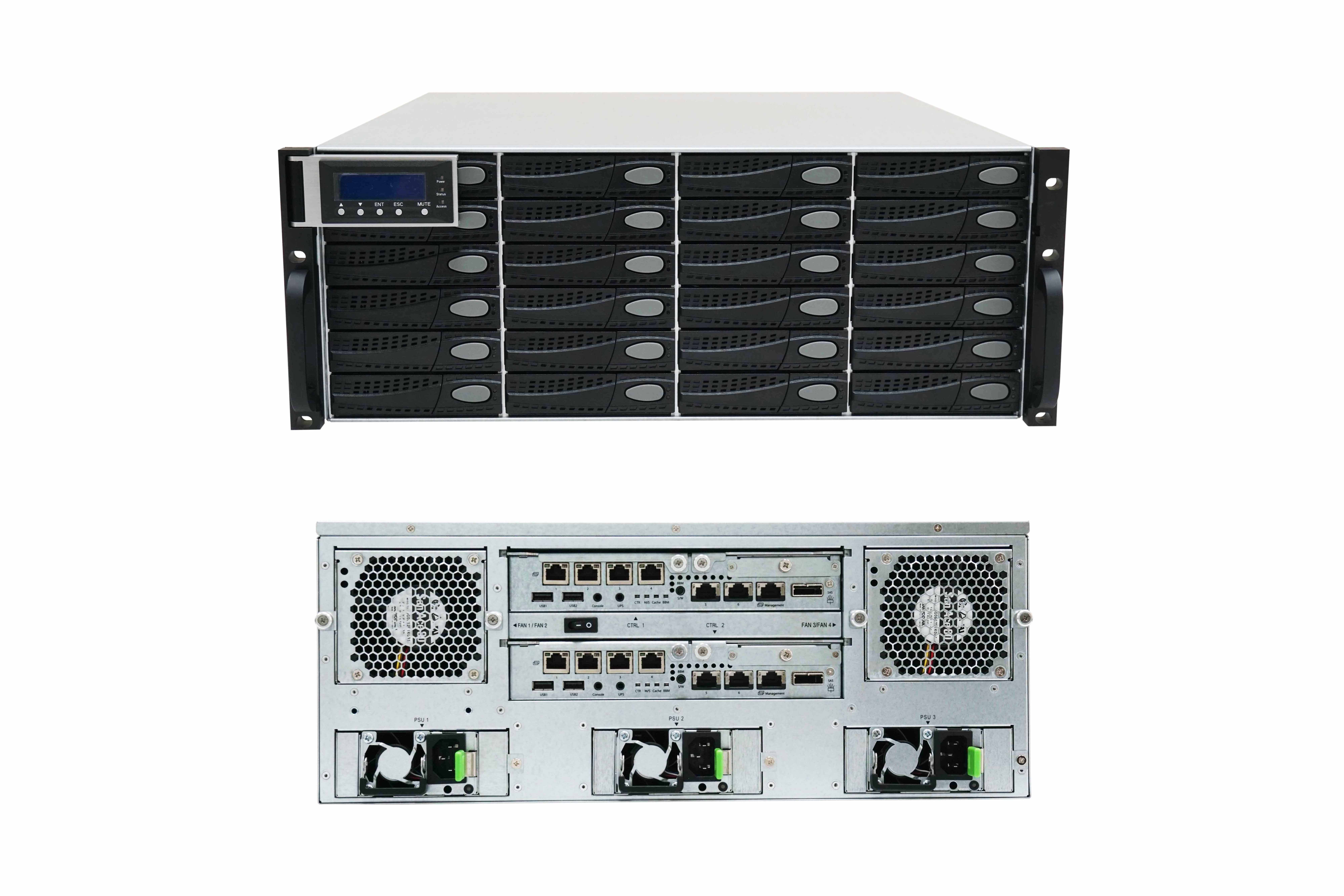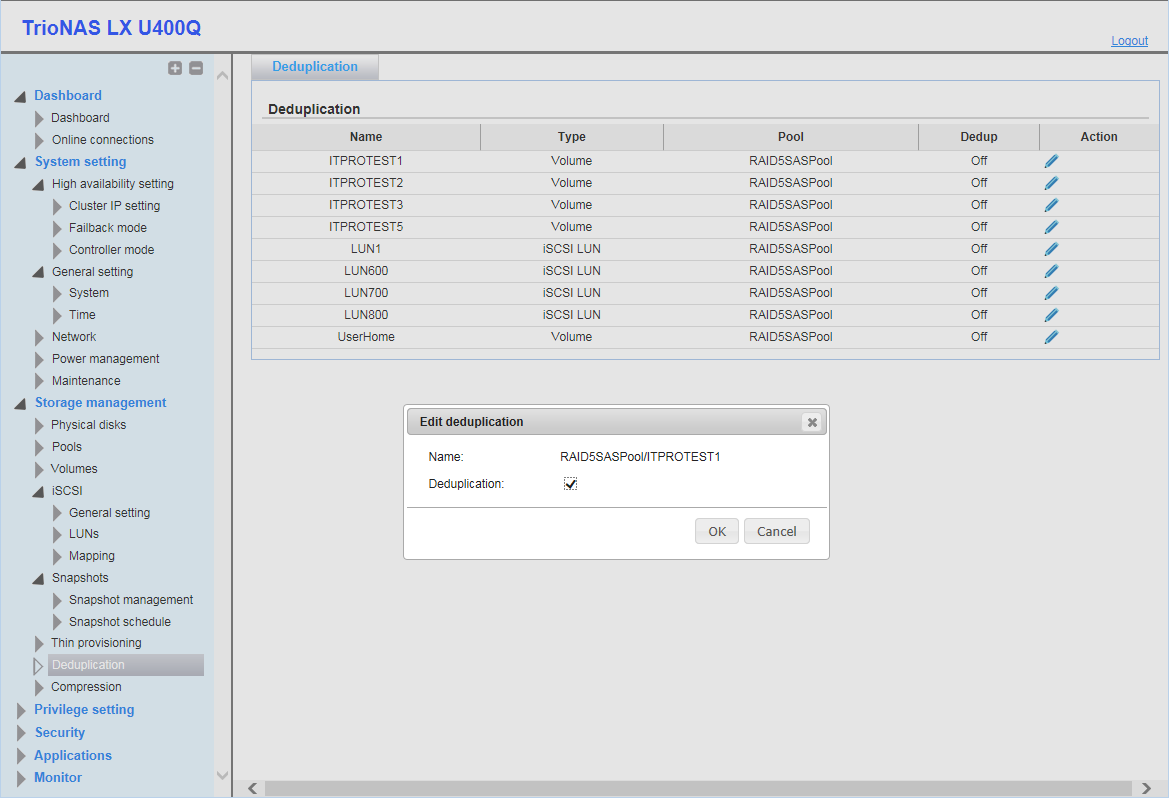Qsan TrioNAS LX U400HA-D424 review
Qsan’s new TrioNAS LX delivers enterprise-class storage features at a small business price


The U400HA-D424 ticks all the right boxes for high availability storage. Along with fast controller failover and a high capacity, it offers an excellent range of features at a price the blue chips won’t be able to match
-
+
Excellent value; Dual active/active controllers; Very fast failover; NAS and IP SAN support; Good performance
-
-
Some software features yet to be implemented; SATA drives require extra MUX boards

More redundancy and MUX boards
Each controller has seven Gigabit ports with six used for data and the seventh dedicated to management duties. As both controllers are active, all twelve ports are available for data services with dual redundant links for management access as well.
Each controller has an external SAS port and the appliance supports up to 256 hard disks. You can daisy-chain Qsan's J300Q JBOD disk shelves over redundant links and these units also have dual PSUs and fans.
The appliance supports SAS drives but if you want to use SATA drives you'll need to fit Qsan's MUX interposer boards at the rear of each drive carrier. Costing around 40-50 each, these do negate the cost benefits of using cheaper SATA drives.

ZFS provides an impressive range of storage management features including deduplication
Sign up today and you will receive a free copy of our Future Focus 2025 report - the leading guidance on AI, cybersecurity and other IT challenges as per 700+ senior executives
Dave is an IT consultant and freelance journalist specialising in hands-on reviews of computer networking products covering all market sectors from small businesses to enterprises. Founder of Binary Testing Ltd – the UK’s premier independent network testing laboratory - Dave has over 45 years of experience in the IT industry.
Dave has produced many thousands of in-depth business networking product reviews from his lab which have been reproduced globally. Writing for ITPro and its sister title, PC Pro, he covers all areas of business IT infrastructure, including servers, storage, network security, data protection, cloud, infrastructure and services.
-
 Qualcomm the data center with $2.4 billion Alphawave Semi acquisition
Qualcomm the data center with $2.4 billion Alphawave Semi acquisitionNews The move sees Qualcomm absorb Alphawave Semi’s portfolio of custom silicon, high-speed connectivity solutions, and chiplets
By Daniel Todd Published
-
 ‘If software development were an F1 race, these inefficiencies are the pit stops that eat into lap time’: Why developers need to sharpen their focus on documentation
‘If software development were an F1 race, these inefficiencies are the pit stops that eat into lap time’: Why developers need to sharpen their focus on documentationNews Poor documentation is a leading frustration for developers, research shows, but many are shirking responsibilities – and it's having a huge impact on efficiency.
By Ross Kelly Published
-
 OpenAI says GPT-5.2-Codex is its ‘most advanced agentic coding model yet’ – here’s what developers and cyber teams can expect
OpenAI says GPT-5.2-Codex is its ‘most advanced agentic coding model yet’ – here’s what developers and cyber teams can expectNews GPT-5.2 Codex is available immediately for paid ChatGPT users and API access will be rolled out in “coming weeks”
By Ross Kelly Published
